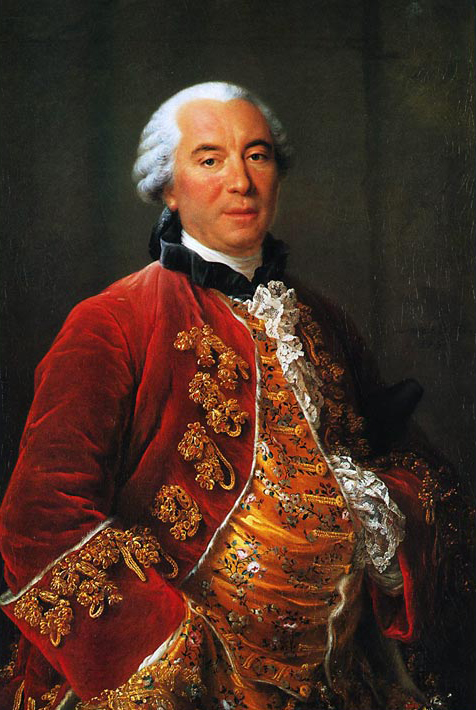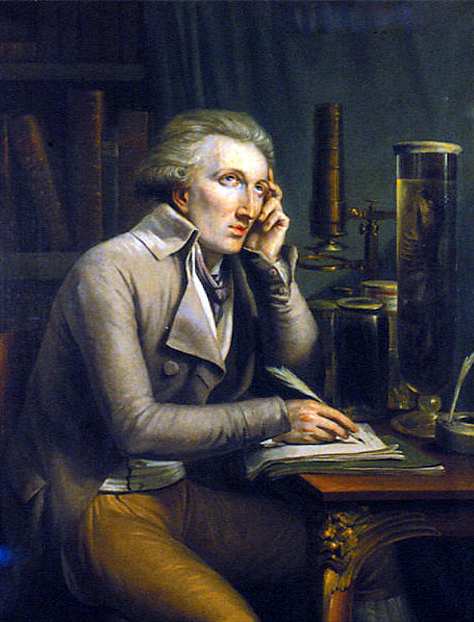By the time of Meriwether Lewis‘s visit to Philadelphia in 1803, the concept of extinction—the wholesale extirpation of a species—had been grappled with for generations. Clearly, fossils were the remains of deceased organisms; some of them looked much like modern organisms, too. But could unfamiliar ones among them be the remains of creatures utterly gone? For a long time, the status quo on fossils was that they represented the remains of species still living on earth, although some naturalists considered them as vestiges of those that lived before the Noahchian Flood and had not been rescued.
Possibilities
By the time of the Lewis and Clark expedition, most geological theorists believed in an incredibly long time span for the earth’s history. Some of these scholars publicly or privately expressed their belief in an earth millions of years old, which certainly could allow for the coming and going of species. In 1800, there was no systematic arrangement to fossils other than in their comparison to living organisms. There were as yet no certain evolutionary “dead ends”—and in fact there was no “evolution.” The major debate of creationism at this time was whether the modern earth’s surface came by gradual change or from catastrophic causes. Although catastrophes could have included the Noachian Flood, the spurious invocation of that calamity was falling from scientific favor. By this time, natural history as a profession or avocation was wholly dominated by Old World scholarship and scholars.
It was Georges Buffon (1707-1788), a French count, who was the first to broadly challenge centuries of theologically influenced scientific dogma in his final masterpiece, Les . . . poques de la Nature (The Epochs of Nature, 1788). It was founded on his magnum opus, the first 39 volumes of his encyclopedic Histoire Naturelle (Natural History). He theorized, nearly a century before Charles Darwin did, that changes in organic life forms indicated descent from common ancestors—although the concept of “evolution” per se still was yet to be contrived. Buffon also believed that the earth’s Biblical age of 6,000 years was far too short a time. Other scholars were more or less of the same opinion with Buffon, but his prominence, credentials, and authority were greatest and so given the most credence. So authoritative was his work that, in fact, six volumes of his Histoire Naturelle were published posthumously.
Buffon’s work presaged a more modern geological view of the world, one where the earth’s surface was not the result of catastrophic processes like some portrayed in Biblical accounts, but rather was created by slow, methodical geological processes over a very long period of time. Despite his move toward a very long geological history of the world, which would eventually embrace the idea of the extinction of species, Buffon still held onto the idea that species did not become extinct. Instead, they were displaced by climatic changes (for example) and they disappeared locally or regionally if they could not further escape their disadvantaged positions. Buffon dismissed American fauna as degenerate, stunted by geographic location and unfavorable climates, to the point of asserting that even domestic animals imported to America became smaller. It was nonetheless the intellectual foundation for the next generation of great natural historians.
Lewis and Clark’s Outlook
At the start of the nineteenth century, the field of paleontology was practiced by a constellation of avocational naturalists (like Buffon, who shined brightest among them). Their publications were of varied topical focus, with no master work available on the subject. Meanwhile, the world’s next undisputed leading naturalist was rising to prominence. He was Georges Cuvier (1769-1832), a French baron fast becoming the comparative anatomist to emulate. Among his voluminous contributions, those to the science of paleontology finally established this field as one of disciplined study and analysis. He had broad but carefully defined views of the systematic relationships between organisms. At the time that Lewis met Caspar Wistar in Philadelphia, Cuvier’s later comprehensive works on vertebrate fossils were authoritative; and it is in this respect that his work connects with that of Wistar.
An academic stumbling block, however, was that the up and coming Cuvier was decisively of the Old World kind of scholarship—orderly, rigid, and biased to the physical and intellectual products of the Old World, although perhaps not as biased as that of Buffon. His perspective was not entirely exclusive; he would come to see that America was not intellectually barren. It took some pointed attention to prove this to the established academicians of Europe and England, because regardless of what useful relics and work came from across the Atlantic Ocean, Americans were nevertheless on the geographical frontier of academia, much in the way that the establishment viewed eastern and southern European scholars. This was a world held together by communiqués rather than face-to-face meetings; much of it was conducted as correspondence.
Already by 1803 there were scholarly opinions and documentary specimens—American ones in fact—that threatened the established views of the constellation of leading Old World naturalists. Most recent and notable were Thomas Jefferson and his megalonyx bones (see Giant Sloth Bones). What Meriwether Lewis could not realize was that he had come to Philadelphia at the very time that the first validated proofs of extinction were circulating in the American community of scholars. These included, serendipitously, Megalonyx at the American Philosophical Society, and Charles Willson Peale‘s mastodon, conveniently next door in the State House (Independence Hall today). In a decade or two Philadelphia’s learned men would, finally, help prove to European and English north European masters that American natural history was neither a dustbin of degenerate Old World organisms, nor perused by intellectual impotents. Finally banished were the biases authoritatively perpetrated by Buffon and other contemporary, Old World scholars.
So, for Meriwether Lewis the theory of extinction was a philosophical argument, not a foregone conclusion. He might even have wondered how he would deal with a live mastodon if he came across one.


